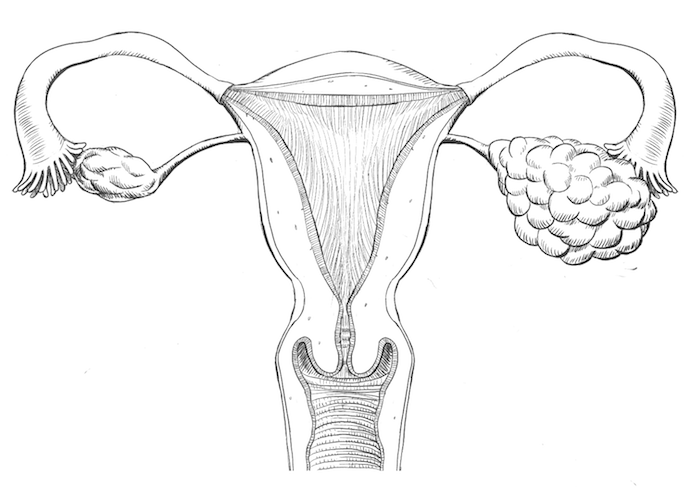Is there currently a class-action talcum powder lawsuit?
Lawsuits over asbestos-contaminated talcum powder are currently in active MDL against Johnson & Johnson (and other manufacturers.) In October 2019, the U.S Food and Drug Administration (FDA) detected asbestos in several talc-containing cosmetic products. As a result, Johnson & Johnson recalled over 30,000 bottles of talcum powder – prompting national retailers to take them off the shelves. By August 2020, Johnson & Johnson announced that it would permanently remove these products from shelves in the United States and Canada. As of July 2022, Johnson & Johnson had paid approximately $4 billion in settlements.
Class-action and MDL lawsuits bring together plaintiffs from all across the United States. These victims need professional legal services to fight for fair compensation. At McIntyre Law, we believe winning your talcum powder lawsuits means making you a part of the team. The better we understand your pain and suffering, the more effective our case against pharmaceutical companies. We’re an Oklahoma-based firm that believes in bringing a personal touch to your case regardless of where you live. That’s why our founder, Noble McIntyre, is always available to answer any of your questions.
Source: PR Newswire
What to Know Before You File a Lawsuit

The majority of plaintiffs who’ve won large court awards from Johnson & Johnson have had lawyers to represent them in court. Talcum powder lawsuits are complicated legal proceedings, which is why it’s smart to hire a law firm like McIntyre Law. It can be tempting to handle your own case, but preparing court briefs and serving a summons takes time and knowledge of the law. Even collecting your medical records is tricky given that the required time doctor’s offices and hospitals must keep medical records varies from state to state.
When you sue billion-dollar corporations like Johnson & Johnson, you’re taking on Big Pharma — these institutions have enormous financial and legal resources. That’s hardly a job for a someone suffering from medical complications. With McIntyre Law at your side, you can level the playing field against these corporations and help increase your chances of getting the compensation you deserve.
What is a contingency fee?
When a lawyer works on a “contingency fee” basis, they’re agreeing to accept a fixed percentage of any monetary rewards from your lawsuit to cover their legal fees. If there are no rewards from the case, you don’t pay the lawyer. We get paid if, and only if, you do.
The Statute of Limitations for Talcum Powder Lawsuits
If you wait too long to file your talcum powder lawsuit, the court may refuse your case. The exact deadline for filing varies from one state to the next, but most range from either two to three years from the time you’re first diagnosed with ovarian cancer. For families of deceased loved ones, the deadline usually begins on the date they passed away. If you’ve been diagnosed with cancer and regularly used talcum powder, talk to a lawyer as soon as possible. They can help you quickly document your medical timeline and match it with your specific state to determine if you’re eligible for a talcum powder lawsuit.
What compensation can I get from a talcum powder lawsuit?
Several courts in California and Missouri have awarded damages to plaintiffs for millions of dollars. But cash settlements are only one kind of compensation you could receive from a talcum powder lawsuit settlement. Here are a few others:
- Medical bills
- Pain and suffering
- Lost wages
- Future expenses
Working with McIntyre Law
Women who’ve used talcum powder for years and developed cancer are suffering debilitating physical effects and financial costs from overwhelming medical bills and lost wages. But these victims no longer need to suffer alone. As evidence around the link between talc and ovarian cancer grows, more and more women are turning to legal firms for help. McIntyre Law is a firm that will fight for your justice and compensation.
Do you have a case for a talcum powder lawsuit?
Even though the link between talc and ovarian cancer has yet to become a consensus among the scientific community, juries are still finding pharmaceutical companies like Johnson & Johnson negligent for not adequately warning consumers about the potential dangers of talc in their products. If you’ve used talcum powder regularly and been diagnosed with ovarian cancer or mesothelioma, you may be eligible for a talcum powder lawsuit. The experienced attorneys at McIntyre Law are now handling these types of cases, and we want to help you get fair compensation for your medical bills and pain and suffering. Contact us for a free consultation today.
Meet Our Talcum Powder Attorneys
You don’t have to suffer alone. You could be entitled to compensation for your medical bills.
Types of Talc Powder Products
Talc is a naturally occurring mineral made of magnesium, silicon, oxygen. Its absorbent properties make it a common choice for personal hygiene products, because it can reduce moisture and friction on the skin. That’s why many women apply talcum powder to their genital areas and use it on their children to prevent diaper rashes. However, the mineral is also listed as an ingredient in hundreds of other types of products. Here are some of the cosmetic powders that contain talc:
- Baby powder
- Body powder
- Foot powder
- Pressed powder
- Blush
- Eyeshadow
- Concealer
- Antiperspirant
Source: FDA Website

Who manufactures talc powder?
Johnson and Johnson has paid more than $700 million to women who’ve developed ovarian cancer after routinely using talcum powder.
Source: The New York Times
Talcum Powder Risks and Side Effects
Thousands of women have filed lawsuits claiming baby powder and other talc-based products caused their ovarian cancer, but that’s only one side effect from exposure to talc dust. In its natural form, talc contains asbestos, a known cancer-causing substance. Although consumer grade talc products have been asbestos-free since the early 1970s, the FDA admits its product testing for contamination can’t ensure every product is safe. However, for talc miners who inhale talc dust, the risk of asbestos exposure is real, and victims point to the increased incidences of lung cancer among workers. Several plaintiffs have sued Johnson & Johnson for asbestos-related cancers like mesothelioma. Here are the common side effects victims have suffered from talc exposure:

- Ovarian cancer
- Lung cancer
- Mesothelioma
- Endometrial (uterine) cancer
How does talcum powder cause ovarian cancer?
For decades, women have applied talcum powder to their genital areas, sanitary napkins, diaphrams, or condoms. Studies suggest baby powder particles can travel through the vagina, uterus, and fallopian tubes to the ovaries, raising the risks of ovarian cancer in some women. A study of 4,000 women released in 2016 showed those who routinely applied talc in this way had a 33 percent higher risk of ovarian cancer. A woman in the U.S. has a 1 in 70 chance of having ovarian cancer. Studies show that women who have used talc have a 1 in 53 percent chance.
Talcum Powder Recalls
Despite the numerous studies showing an increased risk of ovarian cancer for women using talc-based products, there has yet to be a recall from either the FDA, Johnson & Johnson, or other manufacturers of talc-based products.
Talcum Powder and the FDA
Companies like Johnson & Johnson continue to insist their talc-based products are safe while the FDA has yet to take a definitive stand on the issue.
J&J’s director of scientific affairs Dr. Frederick B. Kilmer invents talcum powder.
(June) - First talcum powder lawsuit filed by a 49-year-old physician assistant.
(September) - FDA study begins to test products for asbestos contamination.
(February) - Woman awarded $72 million in first verdict for ovarian cancer/talc lawsuit.
(May) - J&J found guilty of withholding evidence talc was harmful. Awards $55 million.
(October) - Jury awards St. Louis woman $70 million in talcum powder lawsuit.
(December) - 4,000 lawsuits against J&J consolidated in New Jersey federal court.
(May) - $110 million in damages awarded to woman from Virginia.
J&J ordered to pay $80 million to New Jersey man over asbestos-linked cancer.
Justy recommends $25 million in damages for California cancer victim.
Sources: 1, 2, 3, 4, 5, 6, 7, 8
Why was baby powder advertised as being safe for diapers and underwear?
In 1892, Johnson & Johnson’s director of scientific affairs, Dr. Frederick B. Kilmer, first invented a scented talc powder intended “for toilet and nursery”. Since then, baby powder has become so associated with the smell of babies as to be inseparable, and untold numbers of women have used the product on themselves and their families. However, in the early 1970s questions around its safety first came to the public’s attention. Nearly forty peer-reviewed studies later, the potential link between talcum powder, asbestos contamination, and cancer continues to gain scientific consensus. Despite almost a billion dollars in court awards against Johnson & Johnson, the FDA continues to list commercial grade talcum powder products as safe for consumers.





